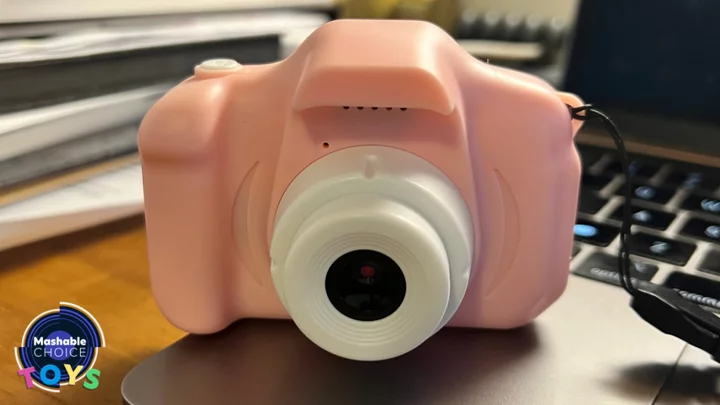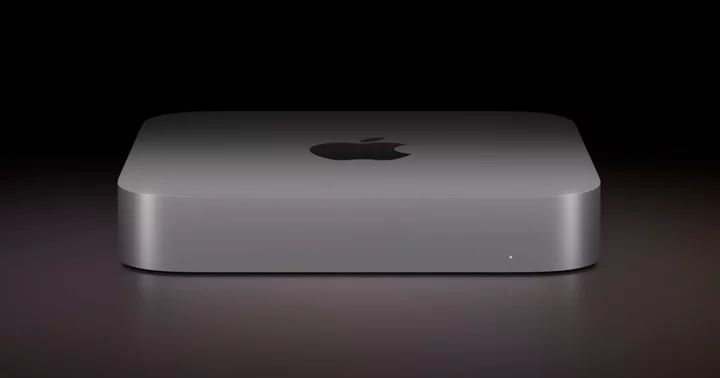X, the Elon Musk-owned platform formerly known as Twitter, has begun serving its users with a weird new ad format and it's one of the company's least transparent products yet.
The rollout of these ads also provides the public with a hint regarding just how much the company is struggling to attract advertisers.
Multiple X users have reached out to Mashable over the past few days to report seeing a new type of ad in their For You feed that they had not previously come across on the platform. These new X ads don't allow users to like or retweet the ad posts. In fact, the new ad format also doesn't disclose who is behind the ad or that it is even an advertisement at all.
Here's X's new clickbait ads featuring chumbox content. Notice the lack of display name and handle. Credit: X screenshotMashable has confirmed this ad format with numerous users from across X and have seen a variety of different ads running this bizarre new format that just consists of written copy text, a photo, and a fake avatar that's sole purpose is to make the ad look like an organically posted tweet.
The type of content being promoted in the ads that Mashable has viewed appear to be consistent with ads found in spammy, low quality "chumbox" advertising – typically defined as those clickbait ads found at the bottom of posts on content farm sites – made popular by native ad networks like Taboola.
"This Seems Unbelievable, But Happens in Dubai Everyday" reads one ad that takes users to a third-party content mill website, overloaded with ads of its own. "These Incredibly Cool Gadgets That Are Going To Sell Out This Year. Action Now!" and "If you suffer from ringing ears (Tinnitus) you're going to love this recent breakthrough" are other examples of some of the content found in these X ads.
Here's another example of X's shady chumbox-esque advertising. Credit: X screenshotUsers who have seen these X ads report being taken to a third-party website in a new window upon clicking anywhere within the ad, including when they try to click on the fake avatar. There is no X post to open nor is there a user profile attached to the ad to visit. So far, Mashable has seen these ads served to users within X's mobile apps. Its unclear if the ads are also running on the web version of the platform.
Mashable was able to find advertisements similar to the aforementioned X ads using the same exact text copy running through ad networks on Yahoo and Taboola competitors like RevContent. Mashable could not locate this X ad format in the platform's ad campaign manager so it appears these ads are actually being served by a third-party ad provider.
The presence of these ads is actually quite telling about the state of advertising on Musk's social media platform.
X turns to the chumbox amid direct ad sale decline
Since Musk's acquisition of the company, X has struggled to attract advertisers to the platform. Half of the platform's biggest advertisers stopped running ads shortly after Musk's takeover. Furthermore, according to a new report from Media Matters For America, the advertisers who have returned are spending up to 90 percent less on advertising on X than they did prior to Musk acquiring the company. Another recent report from Reuters found that Musk's X has faced declining revenue each and every month since he became the owner of the company.
In order to help with declining ad revenue, X has turned to partnering with third-parties within the adtech industry to sell available advertising inventory. Just last month, Google announced it would be partnering with X to sell programmatic advertising. Earlier this year, X also partnered with InMobi, a mobile-focused programmatic ad sales company.
This is how the new X ads look among real, organic posts in the For You feed. Credit: X screenshotSo, what does that mean? Users are likely seeing these ads because X no longer has any direct ad inventory to serve them. This could mean that these particular users seeing these ads are not being targeted by any brands that are running ads at the moment. Or brands that are advertising on X and targeting these users have exhausted their ad spend for the moment. It's also possible that these users have blocked brand accounts that would've targeted them with ads otherwise.
Whatever the reason these users aren't being served ads directly from the platform, the point is that they aren't seeing them. And that means that X hasn't been able to sell enough ad space directly to brands and need to instead serve advertisements from ad networks. In turn, X makes less money as direct ad sales typically generate much more revenue for a company.
These new clickbait X ads
Typically, how it worked on Twitter and then on X until now, ads on the platform were just normal posts that an advertiser paid to show users in their feeds, replies, or profiles.
However, this new ad format completely breaks that as these ads are technically not posts, even if they somewhat look the part. All the engagement buttons on these new X ads are completely grayed out. For example, users are unable to click like, retweet, or reply. These ads cannot be clicked to open in full tweet view like every other X ad format.
This new X ad format completely lacks the three dotted icon button usually present in the upper right hand side of X posts and ads. On a normal post, that button provides users with a slew of options to report a post and mute or block an account. Without it, there are no ways for a user to report or block these types of ads that are being served to them.
Perhaps the biggest deviation from the regular ads on X is that these new ads have no X account attached to them at all. At least, not one that's visible to the user. There is no username or handle present on these ads. While an avatar is displayed in order to make the ad blend in with other posts on a user's feed, the image isn't a profile picture. The avatar appears to just be a cropped version of the photo included within the ad itself.
Without a display name or handle, it's also unclear to the user exactly who is behind the ad. The new ad format also doesn't disclose that it is an advertisement at all. There is no "promoted" or "ad" label on any of these types of ads that Mashable has seen. And, unlike most other websites that run chumbox clickbait advertising, X doesn't even disclose the ad network associated with these ads.
Another example of how these new X ads look like next to real posts in the feed. Credit: X screenshotMashable previously reported earlier this month how these important advertisement disclosure labels were also missing from the traditional X ad formats for some users. However, even in those cases, a user could click the options button to report the post and the platform would inform the user it was an advertisement by providing the option to tell X it was "not interested" in the ad. There is no such option on this new ad format as the three dotted button is missing from these ads. One other way to tell an X ad from a regular post is that ads don't include a timestamp on the posts. The new ad format also excludes a timestamp.
As previously mentioned, Mashable confirmed this ad format with numerous users from across X and have seen a variety of different ads running this new format. Mashable has also found other users who have shared via their own social media accounts that they have also seen these ads in their feed. It's unclear if X is just testing this format at this time.
The new ad format arrives to X around the same time the company made another decision that makes the platform less transparent. Earlier this week, under a directive from Musk himself, X removed headlines and other context from links shared to the platform. Instead of seeing the title of an article or other link posted to X, users now simply see an embed of the header image with the corresponding domain name displayed like a watermark-like overlay in the corner of the photo. Musk said he made the change to how links were displayed because he didn't like the way it previously looked.









